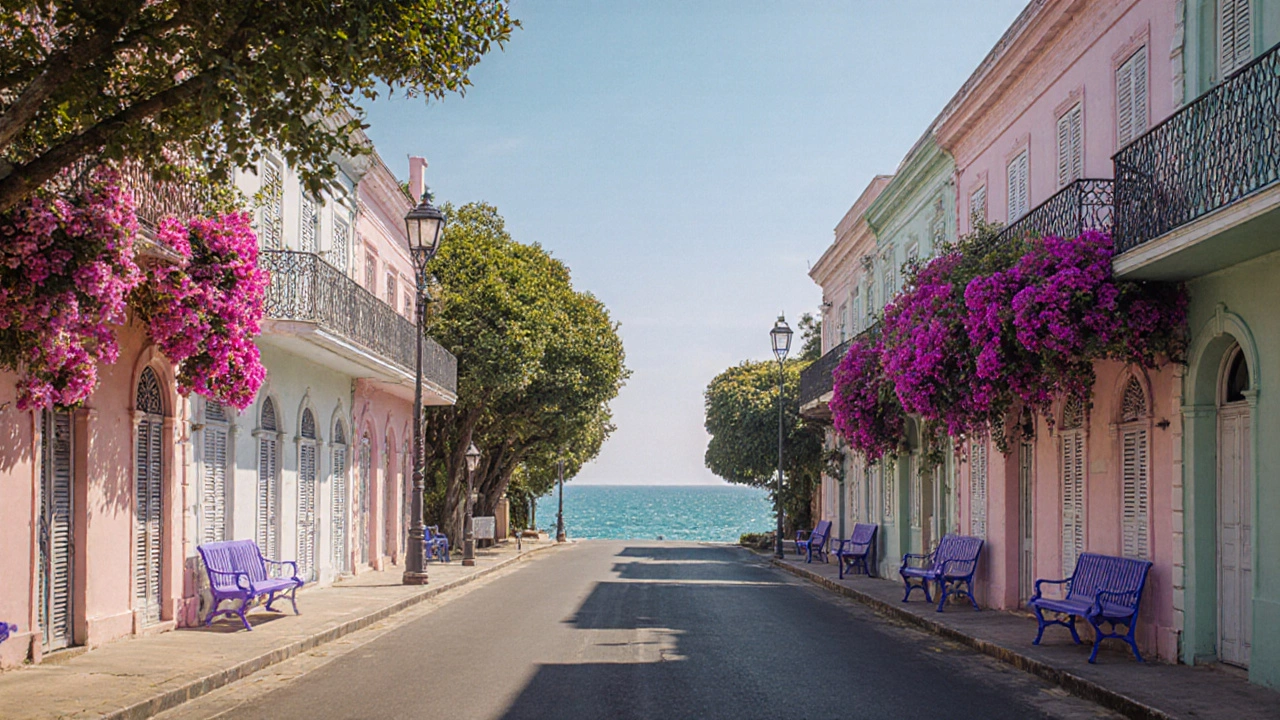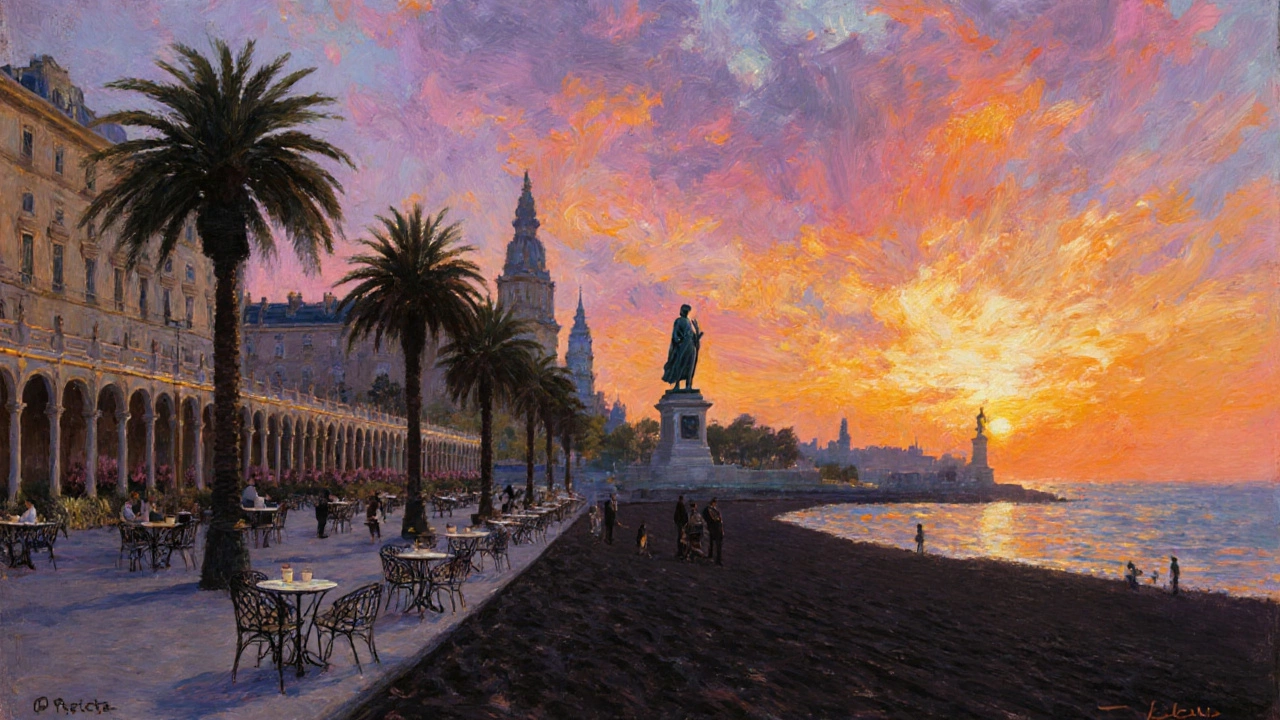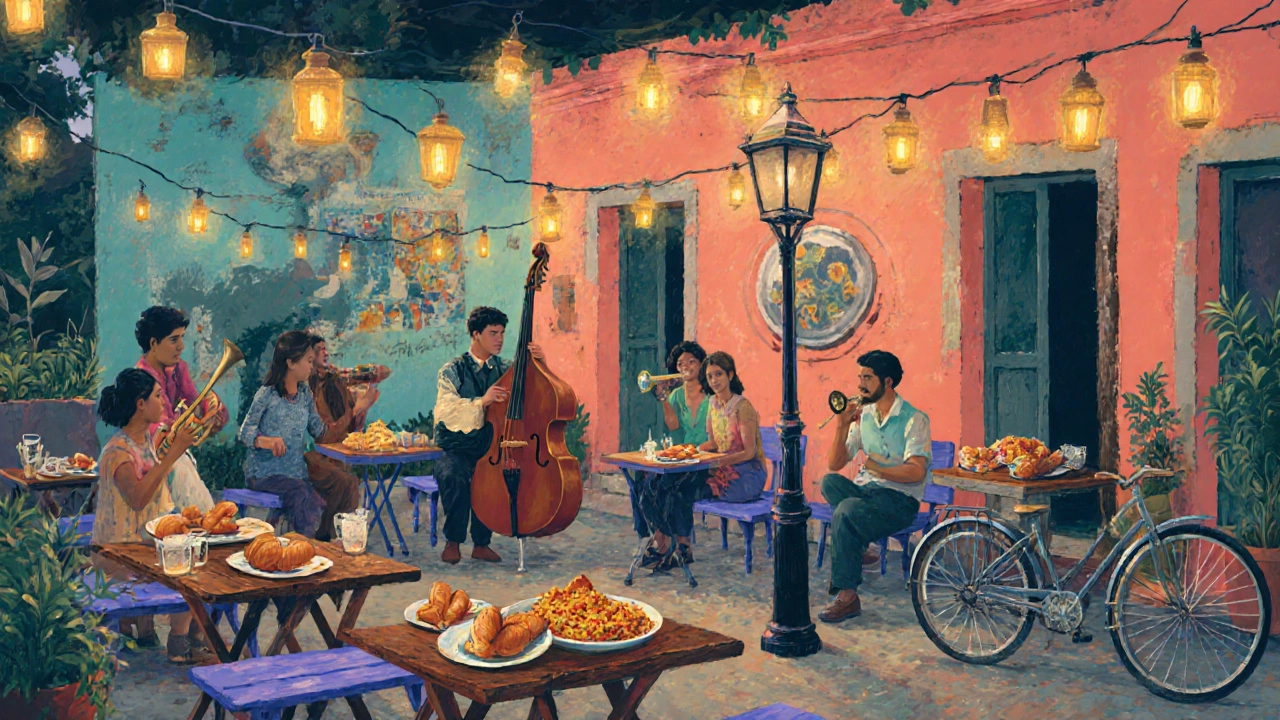Pondicherry: The City Known as the Paris of India
 Oct, 8 2025
Oct, 8 2025
Pondicherry vs Other 'Paris of India' Cities
Explore how Pondicherry compares to other Indian cities that are sometimes called the 'Paris of India'.
French Influence Indian Culture
Known for its French colonial architecture, pastel-colored buildings, and café culture that mirrors Paris. The French Quarter (White Town) is preserved with wide boulevards, colonial buildings, and bilingual signage.
Rating: 4.7/5
Indian Culture
Often called 'City of Joy' or 'Paris of the East'. Features British-era mansions and some European architectural elements but lacks significant French influence.
Rating: 4.3/5
Indian Culture
Known as the 'Pink City', Jaipur has Victorian-inspired hotels and some European architectural touches, but no core French colonial presence.
Rating: 4.5/5
Indian Culture
Called the 'Gateway to the South'. Has a French consulate area and some heritage sites but limited French colonial influence compared to Pondicherry.
Rating: 4.0/5
Why Pondicherry Stands Out
Pondicherry uniquely combines French colonial architecture with vibrant Indian culture. Unlike other cities, it retains its French urban planning, including wide boulevards, pastel-colored buildings, and café culture that makes it truly feel like a slice of Paris in India.
Quick Facts About Pondicherry
- French Colonial Period 1674–1954
- Best Travel Season October–March
- Key Landmarks Promenade Beach, White Town, Aurobindo Ashram
- Unique Cultural Blend French Cafés + Indian Spirituality
When you hear the phrase Paris of India, the mind often drifts to winding European‑style boulevards, pastel‑colored buildings, and a laid‑back café culture. In India, that nickname belongs to Pondicherry, a coastal union territory that still wears its French past like a well‑tailored coat. Founded as a French trading post in the 17th century, Pondicherry blends Indian vibrancy with French elegance, making it the country’s closest brush with Parisian charm. Below you’ll find everything you need to understand why this tiny town earns the moniker, what to see, and how it stacks up against other Indian cities that claim a similar credit.
Key Takeaways
- Pondicherry is widely recognized as the Paris of India because of its French colonial architecture and relaxed lifestyle.
- The French Quarter, also called White Town, showcases pastel facades, bougainvillea‑lined streets, and café culture.
- Major attractions include Promenade Beach, Aurobindo Ashram, and the vibrant markets of the old town.
- Travel best from October to March when the weather is pleasant and cultural festivals are in full swing.
- Comparatively, Kolkata and Jaipur have historic ties to Europe, but Pondicherry offers the most authentic French ambience.
Why Pondicherry Earns the Nickname
Two factors make Pondicherry stand out: the visual imprint of French urban planning and a lifestyle that mirrors Parisian leisurely habits. Wide, tree‑lined avenues such as Rue Dumas lead to the sea and are punctuated by violet‑blue benches, street lamps, and pastel‑painted houses. In the evenings, locals and tourists alike sip coffee on sidewalk cafés, watching the sunset over the Bay of Bengal-an experience that feels more European than Indian.
Historical French Influence
From 1674 until 1954, Pondicherry was the capital of French India. The French administration introduced a grid‑like city plan, strict building regulations, and a focus on public squares. When India reclaimed the territory, many of those regulations remained, preserving the colonial aesthetic.
The French Quarter also known as White Town, features pristine, white‑washed structures, colonial fountains, and manicured gardens that recall the streets of Montmartre. This area is peppered with French‑style villas, each sporting wrought‑iron balconies and high ceilings that keep interiors cool in the tropical heat.

Architectural Highlights
- Promenade Beach - A 1.5‑km stretch of black‑sand shoreline framed by the historic French War Memorial and the Statue of Joan of Arc. The promenade’s colonnade mirrors the iconic Quai d’Orsay in Paris.
- Aurobindo Ashram - While not French, this spiritual centre sits just a stone’s throw from the French Quarter, offering a tranquil contrast to the bustling cafés.
- Manakula Vinayagar Temple - A vivid example of Dravidian architecture located only minutes from the colonial heart, showing how Indian and French cultures co‑exist.
- White Town Heritage Walk - Guided tours highlight the French Colonial Architecture characterized by arched windows, shutters painted in pastel shades, and tile roofs that echo Normandy’s countryside.
Cultural Vibes Akin to Paris
Beyond bricks and mortar, Pondicherry’s atmosphere feels Parisian. The city hosts an annual French Film Festival, encouraging cinephiles to watch classics under open‑air screens. Street art, modeled after French impressionists, decorates walls in the Montmartre‑style district.
Cafés such as Café des Arts serve croissants, espresso, and local delicacies like masala puffs, blending French technique with Indian flavors. Live jazz nights at the Le Café draw musicians from across the world, echoing the vibe of a Parisian jazz club.
Travel Tips for Visiting Pondicherry
- Best time: October-March. Temperatures stay around 24‑30°C, perfect for walking tours.
- Getting there: Fly into Chennai (about 150km away) and take a 3‑hour taxi or an AC bus.
- Where to stay: Choose heritage hotels in White Town for an authentic feel-options range from budget guesthouses to boutique stays.
- Getting around: Rent a bicycle or an electric scooter; the city’s flat terrain makes it easy to explore on two wheels.
- Local etiquette: Dress modestly when visiting temples, but feel free to wear smart‑casual attire in cafés and boutiques.

How It Compares to Other ‘Paris of India’ Claims
| City | Nickname | Key French Influence | Tourist Rating (out of 5) | Best Season |
|---|---|---|---|---|
| Pondicherry | Paris of India | Colonial architecture, French cafés, bilingual signage | 4.7 | Oct‑Mar |
| Kolkata | City of Joy (sometimes “Paris of the East”) | British‑era mansions, but limited French elements | 4.3 | Oct‑Feb |
| Jaipur | Pink City (occasionally likened to Paris for its architecture) | Victorian‑inspired hotels, but no colonial French core | 4.5 | Oct‑Mar |
| Chennai | Gateway to the South (few call it “Paris of India”) | French consulate area, limited heritage | 4.0 | Nov‑Feb |
While Kolkata and Jaipur boast cultural richness, none preserve the French urban spirit as intimately as Pondicherry. The table highlights why travelers looking for a genuine Franco‑Indian blend should prioritize Pondicherry.
Beyond the Nickname: What Makes Pondicherry Unique
Modern Pondicherry is a blend of yoga retreats, tech startups, and traditional fishing villages. The Indian Tourism Board has consistently listed Pondicherry among the top 10 heritage destinations in India, citing its preservation of French architecture and vibrant cultural calendar. Annual events such as Ouvé Festival (a celebration of French cuisine) and Ganesh Chaturthi (a Hindu festival) showcase the city’s dual identity.
Practical Checklist for a Seamless Visit
- Carry a small umbrella - sudden showers are common during monsoon transition.
- Try the local snack “biryani à la française” - a fusion dish served at Cafe Des Arts.
- Bring comfortable walking shoes - cobblestone streets can be uneven.
- Exchange a modest amount of euros if you want the authentic French buying experience; many boutiques accept both rupees and euros.
- Respect local customs - remove shoes when entering temples and ashrams.
Frequently Asked Questions
Why is Pondicherry called the Paris of India?
The nickname comes from its French colonial past, which left a legacy of pastel‑colored buildings, wide boulevards, and a café culture that mirrors Paris. The French Quarter, known as White Town, preserves these elements, making the city feel distinctly European within an Indian setting.
What are the must‑see attractions in Pondicherry?
Key spots include Promenade Beach, the French Quarter (White Town), Aurobindo Ashram, Manakula Vinayagar Temple, and the bustling Goubert Market. A heritage walk through the French streets offers insight into the city’s architecture and history.
When is the best time to visit?
October to March provides pleasant weather, low humidity, and a packed calendar of cultural festivals. This period also aligns with the peak tourist season for comfortable sightseeing.
How does Pondicherry differ from other Indian cities with a ‘Paris’ nickname?
Unlike Kolkata or Jaipur, which have limited French elements, Pondicherry’s entire urban fabric-streets, architecture, cafés, and bilingual signage-reflects French colonial planning. This makes the French ambience far more immersive.
Is English widely spoken?
Yes. English is commonly used in hotels, cafés, and tourist services. Additionally, many locals speak French, especially in the French Quarter, adding another layer to the city’s multicultural vibe.